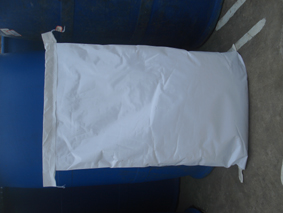|
|

Build Your Online Product Catalogs?
| Product Name: |
Activated carbon Supply
|
| Supply Ability: |
|
| Related proudcts |
activated carbon, |
| Specifications |
Specifications |
| Price Term: |
|
| Port of loading: |
|
| Minimum Order |
|
| Unit Price: |
|
|
Production
Activated carbon is produced from carbonaceous source materials like nutshells, peat, wood, lignite and coal. It can be produced by one of the following processes:
Physical reactivation:
The precursor is developed into activated carbons using gases. This is generally done by using one or a combination of the following processes:
o Carbonization: Material with carbon content is pyrolyzed at temperatures in the range 600-900 °C, in absence of air (usually in inert atmosphere with gases like argon or nitrogen)
o Activation/Oxidation: Raw material or carbonised material is exposed to oxidizing atmospheres (carbon dioxide, oxygen, or steam) at temperatures above 250 °C, usually in the temperature range of 600-1200 °C.
Chemical activation:
Prior to carbonization, the raw material is impregnated with certain chemicals. The chemical is typically an acid, strong base, or a salt (phosphoric acid, potassium hydroxide, sodium hydroxide, zinc chloride, respectively). Then, the raw material is carbonized at lower temperatures (450-900 °C). It is believed that the carbonization / activation step proceeds simultaneously with the chemical activation. This technique can be problematic in some cases, because, for example, zinc trace residues may remain in the end product. However, chemical activation is preferred over physical activation owing to the lower temperatures and shorter time needed for activating material.
Properties
A gram of activated carbon can have a surface area in excess of 500 m2, with 1500 m2 being readily achievable.[2] Carbon aerogels, while more expensive, have even higher surface areas, and are used in special applications.
Under an electron microscope, the high surface-area structures of activated carbon are revealed. Individual particles are intensely convoluted and display various kinds of porosity; there may be many areas where flat surfaces of graphite-like material run parallel to each other, separated by only a few nanometers or so. These micropores provide superb conditi |
| Company: |
Chemland Group INC
|
| Contact: |
Ms. Sunny Sun |
| Address: |
NO.10 HongKong Middle Rd, Qingdao,China |
| Postcode: |
266071 |
| Tel: |
86-532-85026682 |
| Fax: |
86-532-85027689 |
| E-mail: |

|
|
|
|